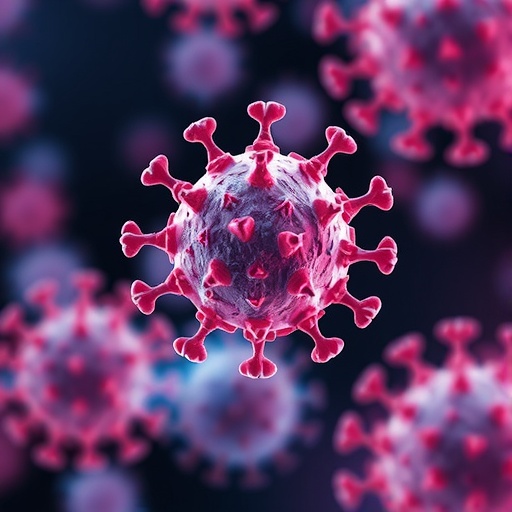Human papillomavirus (HPV) integration into the host genome marks a pivotal molecular milestone in the pathogenesis of HPV-associated cancers, most notably cervical carcinoma. This integration process disrupts the viral and host genomic architecture in complex ways, catalyzing oncogenic transformation and tumor progression. Contrary to early assumptions that viral integration might preferentially occur at specific hotspots via microhomology-mediated recombination, recent advancements in deep sequencing and genomic technologies reveal that HPV insertion happens at essentially random loci within the host genome. This stochastic integration landscape uniquely shapes the biological heterogeneity observed across HPV-induced malignancies.
High-risk HPV genotypes, including HPV18, HPV31, and HPV45, show an almost universal presence of integrated viral DNA within invasive cancers, exhibiting integration frequencies nearing 100%. Such pervasive integration contrasts with low-risk HPV types, which typically remain episomal and rarely integrate, underscoring the mechanistic link between viral genome insertion and malignant potential. Importantly, while tumors can harbor multiple integration events, it is usually a single viral insert that escapes normal regulatory constraints, driving the overexpression of key viral oncogenes E6 and E7. These oncoproteins critically subvert host tumor suppressor pathways, principally targeting p53 and retinoblastoma protein (pRB), facilitating unregulated cellular proliferation and evasion of apoptosis.
The disruption of the viral E2 gene, a negative regulator of E6 and E7 transcription, is a hallmark consequence of HPV integration. Loss of E2 function removes an essential brake on oncogene expression, thereby amplifying E6 and E7 levels at the integration site. This aberrant expression not only promotes clonal expansion of transformed cells but also induces genomic instability by impairing intrinsic DNA damage repair mechanisms. The resultant accumulation of mutations and chromosomal aberrations propels tumor evolution and heterogeneity, complicating therapeutic responses and clinical outcomes in HPV-related cancers.
Clinically, the detection of HPV integration events has emerged as a transformative biomarker in cervical cancer screening and diagnosis. As global health authorities, including the World Health Organization, mobilize toward cervical cancer elimination, molecular assays that identify integration signatures promise superior specificity compared to traditional cytology. Integration testing refines the triage of HPV-positive women by pinpointing those at highest risk for high-grade cervical intraepithelial neoplasia (CIN III+) and invasive cancer, thus optimizing colposcopy referrals and resource allocation within screening programs. Ongoing clinical trials such as NCT05300243, NCT05570331, and NCT05510830 are rigorously validating the clinical utility of integration-based biomarkers to enhance diagnostic precision and inform patient management strategies.
Therapeutic innovations targeting HPV integration transcend the preventive scope of existing prophylactic vaccines, addressing the unmet need of treating established infections and malignancies. Several therapeutic vaccines currently advancing through clinical development (e.g., trials NCT03185013 and NCT03721978) aim to elicit potent, specific immune responses against HPV oncoproteins. Concurrently, cutting-edge gene editing technologies, including CRISPR/Cas9 and TALENs, offer the prospect of excising integrated viral sequences or disrupting oncogene expression at the genomic level. Moreover, RNA interference approaches, such as siRNA molecules specifically designed against virus-host fusion transcripts, hold promise in silencing oncogenic drivers of HPV-associated cancers.
Immunotherapy has rapidly gained traction as a formidable modality for combating HPV-linked malignancies, particularly in head and neck squamous cell carcinomas. Immune checkpoint inhibitors targeting PD-1/PD-L1 pathways have demonstrated enhanced response rates in this subset, potentially overcoming HPV-mediated immune evasion. Furthermore, adoptive T-cell therapies engineered to recognize HPV-derived antigens leverage the immune system’s precision to effectuate tumor regression. These modalities highlight the paradigm shift towards personalized immuno-oncology for virally driven cancers, integrating molecular insights gleaned from viral integration biology.
Despite significant advancements, formidable challenges persist. The inherent heterogeneity of HPV integration events—varying in locus, copy number, and resultant genomic rearrangements—complicates the establishment of uniform biomarkers and treatment algorithms. Preclinical models frequently fail to recapitulate the full spectrum of integration biology and tumor microenvironmental interactions, necessitating enhanced model systems for translational research. Bridging these gaps requires an interdisciplinary nexus employing single-cell genomics to dissect intratumoral diversity, spatial transcriptomics to map microenvironmental impact, and machine learning algorithms to decode the complexity of integration patterns and tumor evolution.
Furthermore, achieving global health equity demands expanding the accessibility of molecular testing and advanced therapeutics into resource-limited settings, where cervical cancer remains a leading cause of cancer mortality. Simplified, cost-effective assays for detecting integration events could revolutionize screening programs in underserved regions, aligning with international elimination targets. Engagement with public health infrastructure and policy frameworks will be essential to translate these scientific advances into tangible population health benefits.
The elucidation of HPV integration biology has broadened our understanding of virus-driven carcinogenesis beyond HPV-associated malignancies, serving as a model for studying other oncogenic viruses. The interplay between viral genome hijacking, host genomic instability, immune modulation, and tumor evolution illuminates common pathways exploitable for therapeutic intervention. This mechanistic insight is foundational for innovation in precision oncology, offering new diagnostic biomarkers and therapeutic targets to improve patient outcomes.
In summary, the molecular intricacies of HPV integration underlie its oncogenic prowess and represent pivotal targets for clinical innovation. Advances in detection technologies and therapeutic strategies rooted in integration biology herald a new era in managing HPV-associated cancers. As research continues to unravel the complexities of virus-host genomic interplay, the prospects for early diagnosis, tailored treatment, and effective prevention become increasingly attainable, propelling global efforts to diminish the burden of HPV-driven malignancies.
Subject of Research: Mechanisms and clinical implications of HPV genome integration in HPV-related cancers
Article Title: Not explicitly provided in the text
News Publication Date: Not specified
Web References: http://dx.doi.org/10.1002/mdr2.70026
References: Not listed in the provided content
Image Credits: The AUTHORS
Keywords: Health and medicine




